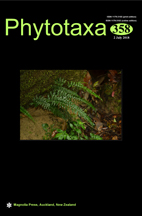Abstract
Odontarrhena tortuosa is a herbaceous species occurring in steppe and rocky habitats of Eurasia. The present study is focused on the cytogeography and morphological variation of the species’ populations growing in the Pannonian basin (Central Europe), which represents the westernmost part of its distribution area. Flow cytometric analyses have revealed the existence of tetraploid populations, which are reported here for the first time for Central Europe. We analysed the morphological variation of 329 individuals from Slovakia, Hungary and Serbia by multivariate morphometric methods to evaluate morphological differences between two cytotypes (diploids and tetraploids), between the subspecies (O. tortuosa subsp. tortuosa and O. tortuosa subsp. heterophylla) and between populations growing in three regions differing in the type of substrate (rocks, sand dunes and sandy and rocky screes). Although we have not found any clear morphological differences between the cytotypes, we have confirmed several previously reported morphological differences between the two subspecies, which occur in regions differing in the type of substrate. Flow cytometric data also indicate certain differences in monoploid genome size between all groups of populations under comparison. Populations from Serbia differ from other populations of O. tortuosa subsp. tortuosa in morphology and genome size, but due to a lack of data on the genetic variation of the species we suggest no change in taxonomy. For the identification of the two subspecies, we present an updated determination key.

